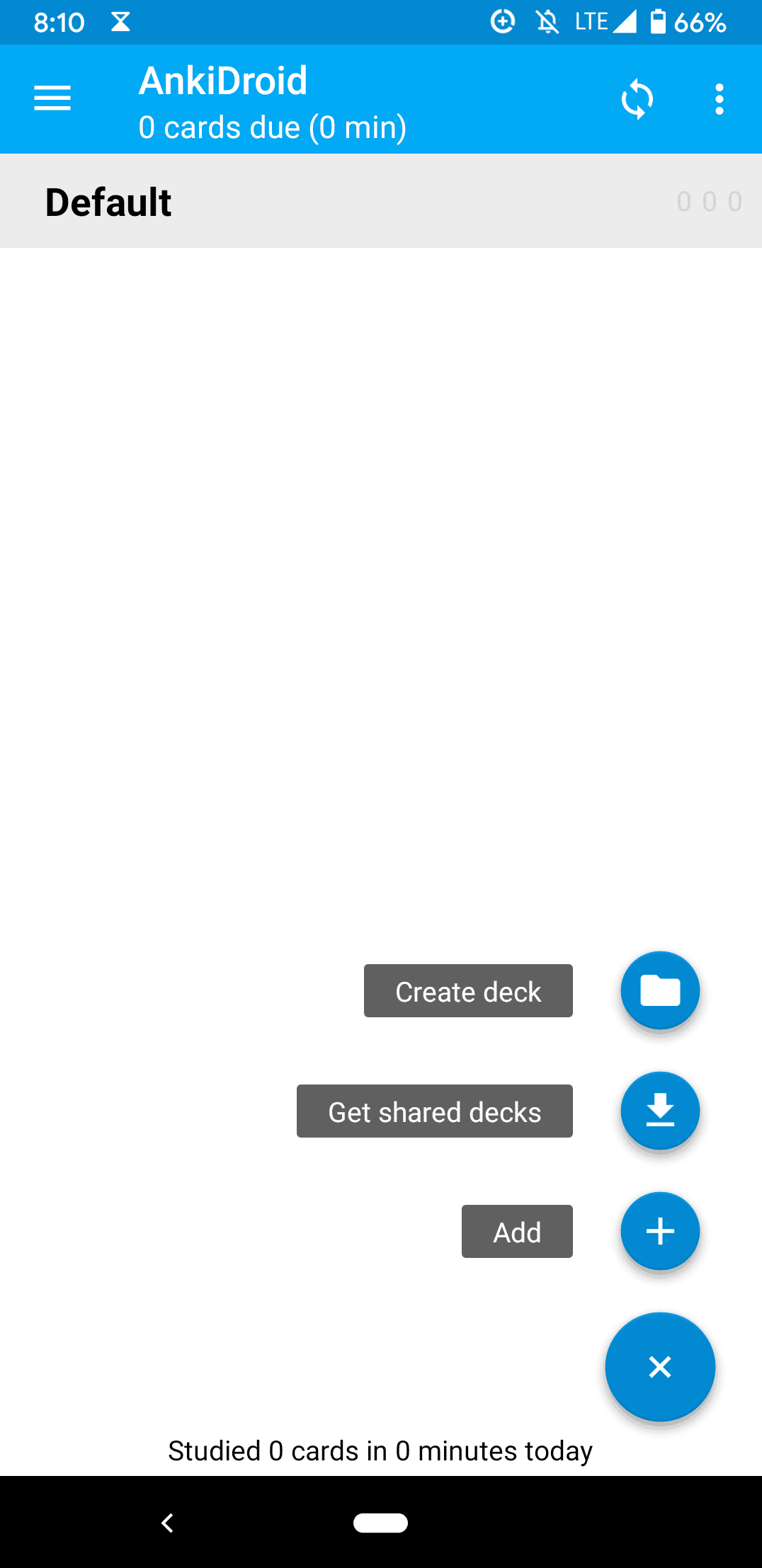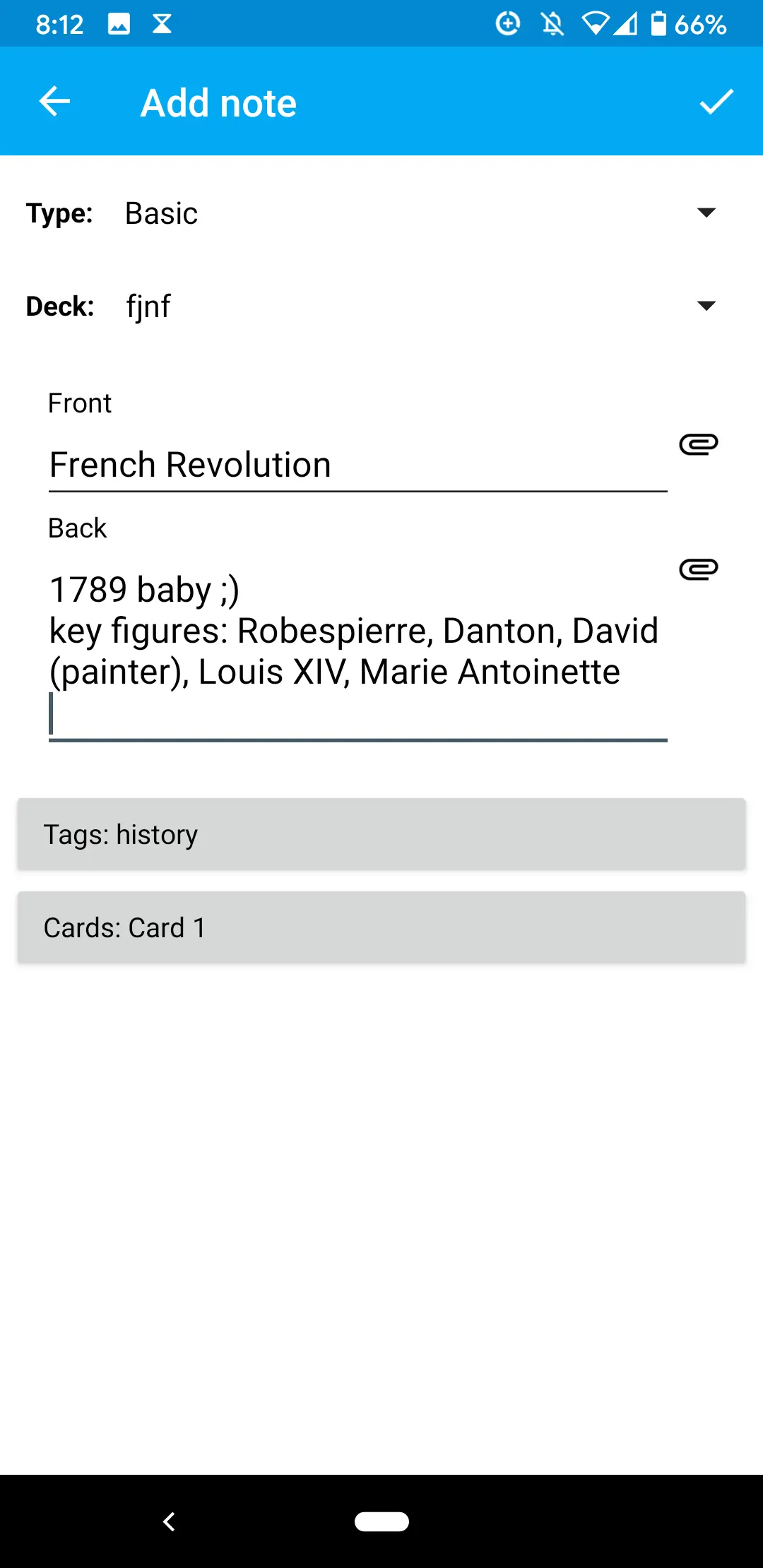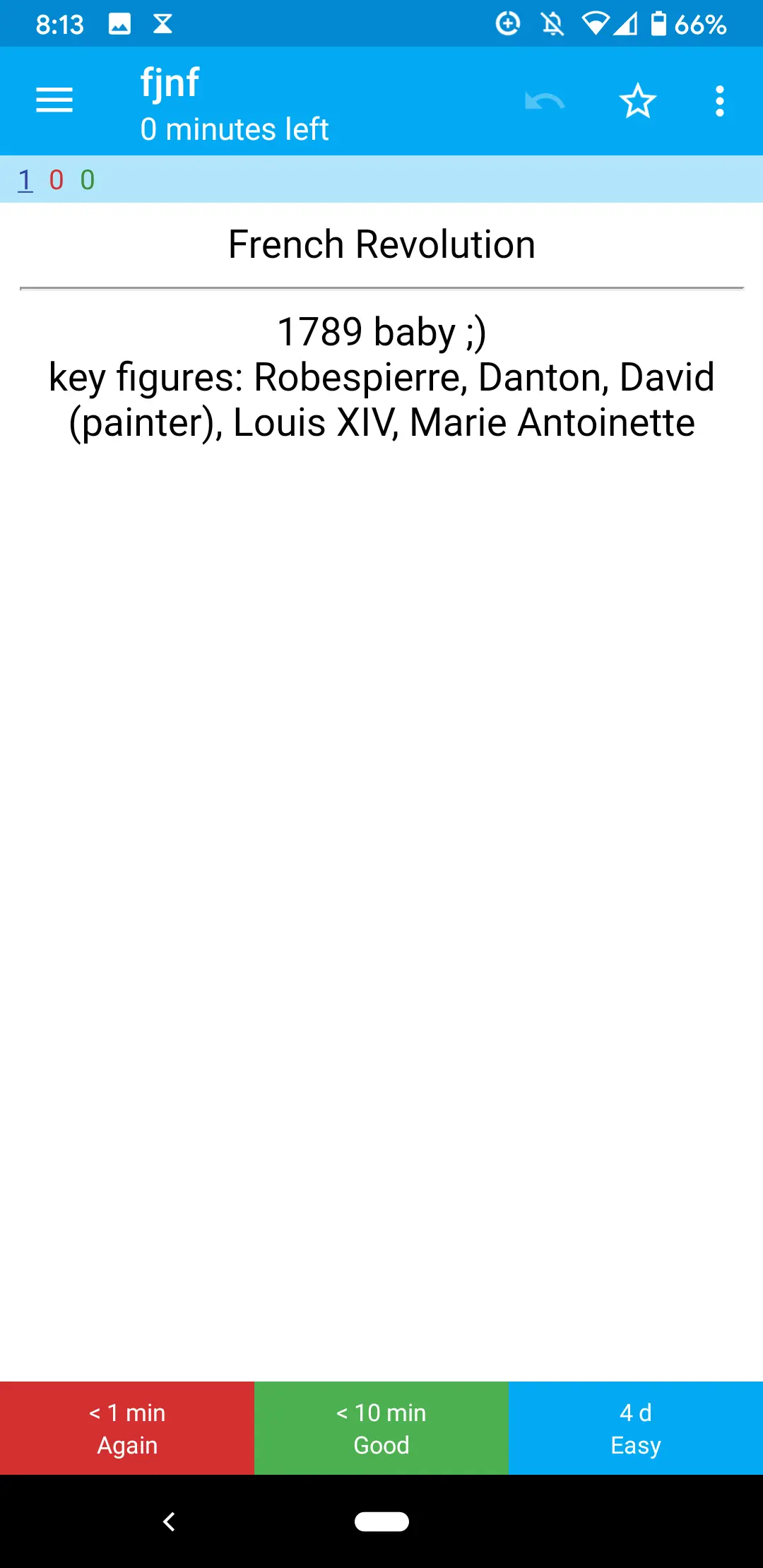Are you feeling bogged down with studying? Too many terms to memorize? Or maybe you’re starting a new semester — med school, language learning, what-have-you — and you’re looking for a study system to help you attack the next level.
Whatever stage you’re at in your educational journey, from high school student to med or grad school, Anki can (probably) help you. Let’s dive in and see how:
 What is Anki?
What is Anki?
Anki is a software program for digital flashcards and other online study tools. It uses an open-source algorithm for spaced repetition, which basically means that the systems you would be implementing on your own with paper flashcards — that is, setting the harder cards aside for extra review, setting yourself goals for how many cards to review each day, etc. — are now online. For many students, having a program helps with the organization and structure of studying means that you can spend more energy on actually studying.
Now, you may be thinking that this sounds a lot like Quizlet, as well as other free online study tools. You wouldn’t be wrong. A few differences: Anki is open-source and, once you download it, won’t show ads. It was designed for customizability, meaning that you have considerable power over how you study. Furthermore, Anki has that spaced repetition software we mentioned built in to the program, meaning that cards marked as ‘hard’ will appear more frequently in your sets without your having to do anything. In Quizlet, in contrast, you can ‘star’ cards, then study just those cards.
Ultimately, though, we aren’t here to convince you. If Quizlet or another study tool is your tool of choice, go for it! We’re just here to show you a new method you may not have known about before.
Plus, Anki is completely free! More on that later.
Does Anki Work? Why is Anki So Good?
Med students tout the utility of Anki, claiming that it reduces their studying by numerous hours. Like any study tool, the tool is not effective without proper usage — so let’s look at the highlights of Anki, and then discuss how to use it effectively.
So, does Anki work? That depends on you — the point of Anki is not to force you to study, but rather to make your studying more effective. So if you’re struggling to find time to study at all — say, twenty minutes a day is all you can feasibly manage — then the effects of using Anki in those twenty minutes, rather than traditional study methods, may not show up greatly (or maybe they will — wouldn’t that be awesome!). Anki is most effective to help out those who already use or would benefit from extensive flash cards, diagrams, and other visual-based study tools.
Let’s look at highlights. You can make your own flashcards, or use others’ flashcard sets. It’s all in the Anki program. Making flashcards online can be way faster than writing them out by hand, because you can copy-and-paste large blocs of text rapidly. And in using others’ flashcards, you don’t have to spend time making flashcards at all!
However, take this with a grain of salt. Some students find that the process of making flashcards by hand is actually where they internalize the most information — making flashcards, in their case, is more important than flipping through them. If you identify with this type of learning — writing, rather than seeing or recalling, information — then Anki may not be the tool for you. We encourage you to give it a try and see how you feel with online learning, and if it saves you time.
Another highlight associated with copy-pasting flashcards is that your flashcards can have more detail than hand-written flashcards. Some med students recommend that you copy entire slides onto your flashcards, to that no scrap of information is left out.
Furthermore, you are able to add images and diagrams, which many students find helpful — especially in tricky subjects, like anatomy.
Finally, with Anki you are able to vary your studying, with fill-in-the-blank and diagram options as well as traditional flashcards. We’ll dig in to that below.
How to Download Anki and Get Started
Downloading Anki is easy — just go to the Anki website, https://apps.ankiweb.net, and hit the big ‘download’ button. It’s free, and it’s compatible with most devices. If you’re studying with a phone or other mobile device, you can get an app.

Next, if you would like, you can create an Anki account and sync your devices. This is useful for saving your progress should you update your device, and is great for studying on the go with a phone as well as with your laptop at home. Do note, however, that making an account is not necessary to study with Anki if that isn’t in your interest.
Now time to create your cards! Or, if you’re pressed for time, simply use someone else’s. Simply click create set, type a name, and then click add to start adding cards.
When making cards, you can divide each card into different fields, so that you’re only tested on one field at a time. For example, you can type one event as your word to study, and then have different fields of date, summary of the event, and important personages. Then, when studying, you can be mentally testing yourself on one field — but the others are there as well.
Further on this point, you can make different fields show as the ‘face’ of the card– for instance, you can tell the program to show the date, and make yourself repeat the event and the rest of the information surrounding that event. This is just one example of how Anki is easily customizable to suit your needs.
You can tag your cards so as to sort them easily later.
To organize, you can sort your cards into sets and subsets. For example, you could have a ‘set’ of ‘Spanish words,’ and then a subset of certain verbs, certain adjectives, etc. In a class, subsets can easily separate different units, or even different topics within a unit.
Once you’ve got your flashcards, it’s time to start studying!
How to Make Anki Flashcards Quickly
If you’re new to using flashcards, either in physical form or online, making new sets can eat up a lot of time. Let’s look at a few ways to cut that down:
1. Use copy-paste. This is easier on a laptop or device where you have a keypad or mouse, although the copy-paste function works on phones as well — and is certainly better than typing everything out.
What do you copy-paste from? Many students copy information directly from their notes (assuming those notes are typed). Barring that, professors are sometimes kind enough to send slides of their lectures ahead of time, in which case you can copy chunks of your slides directly into your flashcards. There are also online sources– if you’re doing vocab, you can Google a word, then copy the definition (once you understand it) and paste it into your flashcard.
Even copying and pasting long lists of terms can take forever, though, so let’s look at some ways to cut that down as well.
2. Make study sets ahead of time. That’s not to rag on you — just to make you aware that building your study sets when you have limited time to actually study is likely to be stressful. If you’re able to make study sets outside of your allotted study time, then you’ll have more time to go through them.

3. Make study sets during class. This generally applies to lecture. There’s often down time between taking notes, so why not use that time to copy-paste some info onto your cards?
4. Use previously made flashcards. Anki has many, many users, who are all studying just like you are. Chances are someone has put out some high-quality flashcards. Take a few minutes to look through each set before committing to use it. If you’re lucky, someone will have made a set that correlates well with your unit, or is based off the same textbook that you are using. Maybe someone who previously took your class can drop you a line to the sets that they made!
How to Use Anki for Med School
Of all students slammed with work, med students rank near the top. There’s much to memorize, and hours of studying to be done. While we aren’t med students, we do know that many students tout the benefits of Anki. Flashcards for med students are nothing new, but the spaced repetition formula can really help cement learning faster than traditional methods.
To see if, and how well, Anki works for you in med school, we encourage you to ease in to it gradually. Use Anki for one unit or section of vocab, and your traditional study methods for another. Note how much time you spend with each. Are you feeling more confident with the information learned through Anki? Are the customizable options beginning to appeal to you? This way you can see for yourself if using Anki for the MCAT, or just for your next test, would help you.
You may also want to check our guide on the best MCAT review books here.
How to Use Anki for Language Learning
There are a lot of language-learning websites and apps out there — many behind paywalls, but many which aren’t. How to choose?
Let’s talk about Anki for language learning. Remember, Anki isn’t like Duolingo or Babbel, which are designed to teach you a language. Anki is just highly efficient flashcard and diagram studying. However, at any stage in the language-learning process, a main goal is to increase your vocabulary. That’s best done through memorization, and here, Anki has your back.
One good method for using Anki to learn a new language is to intersperse it with other studying. Anki doesn’t have articles explaining past tense conjugation, and you’re on your own to take notes and understand indirect object pronouns. However, once you’ve got it down, Anki can help you keep it down.
You can write ‘direct object pronouns’ followed by a summary, which you will have to repeat to yourself before flipping the card. You can also write an English sentence using whichever grammar device you’ve just learned, and make yourself translate it properly before flipping the card.
Plus, Anki’s spaced repetition learning makes it easy to swallow big lists of vocab, from useful phrases to words for farm animals.
How Many Anki Cards Should You Do a Day?
If you want to start on Anki, how many cards should you do? The answer to this is subjective. If you’re a med student dedicated to spending four hours of studying each day anyway, you can hope to get through a few hundred, assuming all of those hours are spent on Anki. If, on the flip side, you have a day job and kids at home, and you’re trying to find an efficient way to learn Spanish in your free time, hundreds of cards probably aren’t in your stars.
To gauge how many cards you should be studying, you have to take a critical look at how much time you’re willing to dedicate to Anki flashcard learning. For example, if you can commit to spending a half hour every night, then take a week doing as many flashcards as you can in that half hour. Record how many you get done. Record also if you feel like you could do more, or if however many cards fills a half hour is already a stretch. Once you have a good idea of how many cards you can do in half an hour, you can decide if you want to measure your progress by the number of cards studied, rather than the allotted time spent studying.
Note as well that how many cards you can, and should, do depends heavily on what your cards contain. A med student might be rattling off a paragraph of highly specialized information with every card, and that takes a lot longer than “Perro — dog!”
Another bit of advice: don’t strain yourself too hard. It’s easy to think you can do any number of cards, then realize you lack time or patience, and quickly burn out. That happens to students and studiers of every ilk. Let’s look at how to start positive studying habits to avoid burnout happening.
How to Make Anki a Habit

First, be intentional, and look at it big-picture. Is there a specific time of day where you would be able to go through flashcards? Maybe you have a bus commute to work, or you always eat lunch scrolling through social media. If you’re able to prioritize flashcards into an already existing chunk of time, it will be easier to fit flashcards into your daily life.
But say you want to study more than in those spare moments. How do you shift to giving long periods of time over to studying with Anki?
To begin, you must set realistic goals for yourself. Common goals would be “study for one hour before bed,” or “get through fifty flash cards every two days.” Often these goals will be associated with material outside of Anki as well. For example, if you’re learning a language, you can say, “I want to be able to order anything on the menu in a Mexican restaurant in a month from now.” Then you’ve got a solid goal to work towards, which is generally more fulfilling than seeing on a screen that you’ve studied food-related words.
It’s also important to make sure those goals are actually achievable. As stated above, if you commit to a ridiculously high number of flashcards, you will probably disappoint yourself — because we’re all human, and shifting our habits overnight is extremely difficult. Instead, it’s best to set small goals which you can succeed at. After you’ve done well at those, you can gradually increase your commitment, rather than trying to take it on all at once.
If you are a student who is already spending a great deal of time studying, it will, hopefully, be easier to incorporate Anki into your study schedule. Simply block out time where you will study with Anki in the same way you would plan to study with traditional methods or flashcards. Hopefully, that already includes a set amount of time, an achievable goal, and an outline of which information you need to cover.
Helpful Anki Shortcuts to Master on Mac or Windows
Using tags can help you organize your cards. It’s easy — just go to ‘browse,’ select your cards, then hit ‘add tags.’ Tags can be strictly organizational — think chapter section or unit — or can be used to tie different subjects together.
In art history, for example, it’s great to tag themes of paintings over time — Titian’s Venus of Urbino and Manet’s Olympia would both be tagged as ‘female nude,’ even though they were hundreds of years apart, painted in different countries and different styles, and would come up in different chapters of any art history course. This way, you can look back on shared themes and look at the similarities and differences between topics which share a theme.
And we’ve already mentioned it, but never underestimate the power of cutting and pasting!
Helpful Anki Tutorial Videos from YouTube
Unless you know that you personally benefit from audio or video learning, your best bet is probably to download the Anki program, set it up, and see how far you get before you need help. However, these videos give a good overview, and also give you a good visual of how Anki will look on your screen:
This is a quick, five and a half minute video explaining the basic idea of Anki and how to make study cards.
This is a much more in-depth video that explains the algorithms Anki uses, which will help you understand Anki on a conceptual level — and might help you study outside of Anki, too. It is thirty minutes.
Wrapping Things Up: How to Use Anki Effectively
In summary, why is Anki so good? Simply put, customization and spaced repetition.
On the customization end, Anki gives more freedom than many of its competitors, and is easy to use once you get the hang of it. You can imbed images and vary your card layout, and you can make your cards as detailed or sparse as befits you.
Spaced repetition is immensely powerful in and of itself, and Anki uses it well to help you learn. Spaced repetition simply means repeating the more challenging cards, which Anki does automatically, so you don’t have to double back and struggle through a stack of the cards you missed. This means you can just open Anki, do a few cards (or a few dozen), and close it, without structuring your spaced repetition yourself.
Overall, Anki is a great tool for med students, pre-med students and other undergrads, as well as for anyone who is past college and just wants to pick up a language or some new information.
Study on!
Did you find this helpful? You may also enjoy our other medical school study tips here.
Check our selection of some of the best medical school study tips:
> MCAT Tips and Test Taking Strategies
> The Best USMLE Step 1 Review Books

 What is Anki?
What is Anki?










